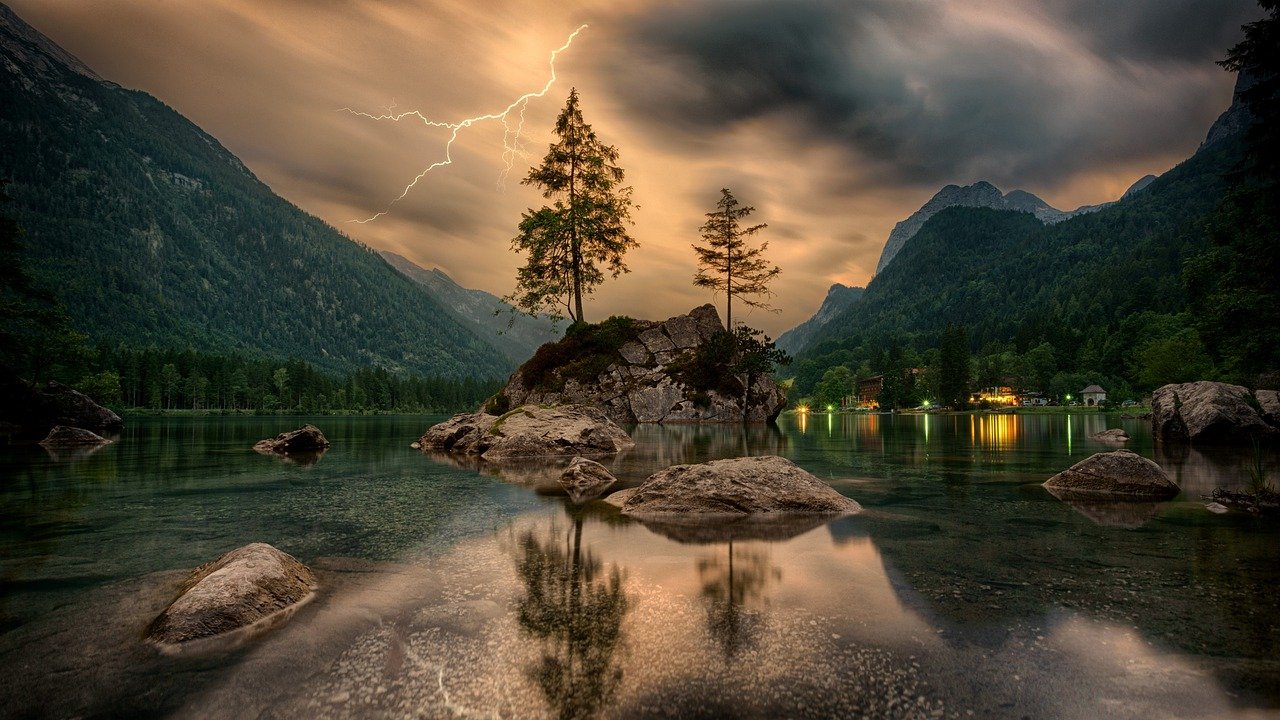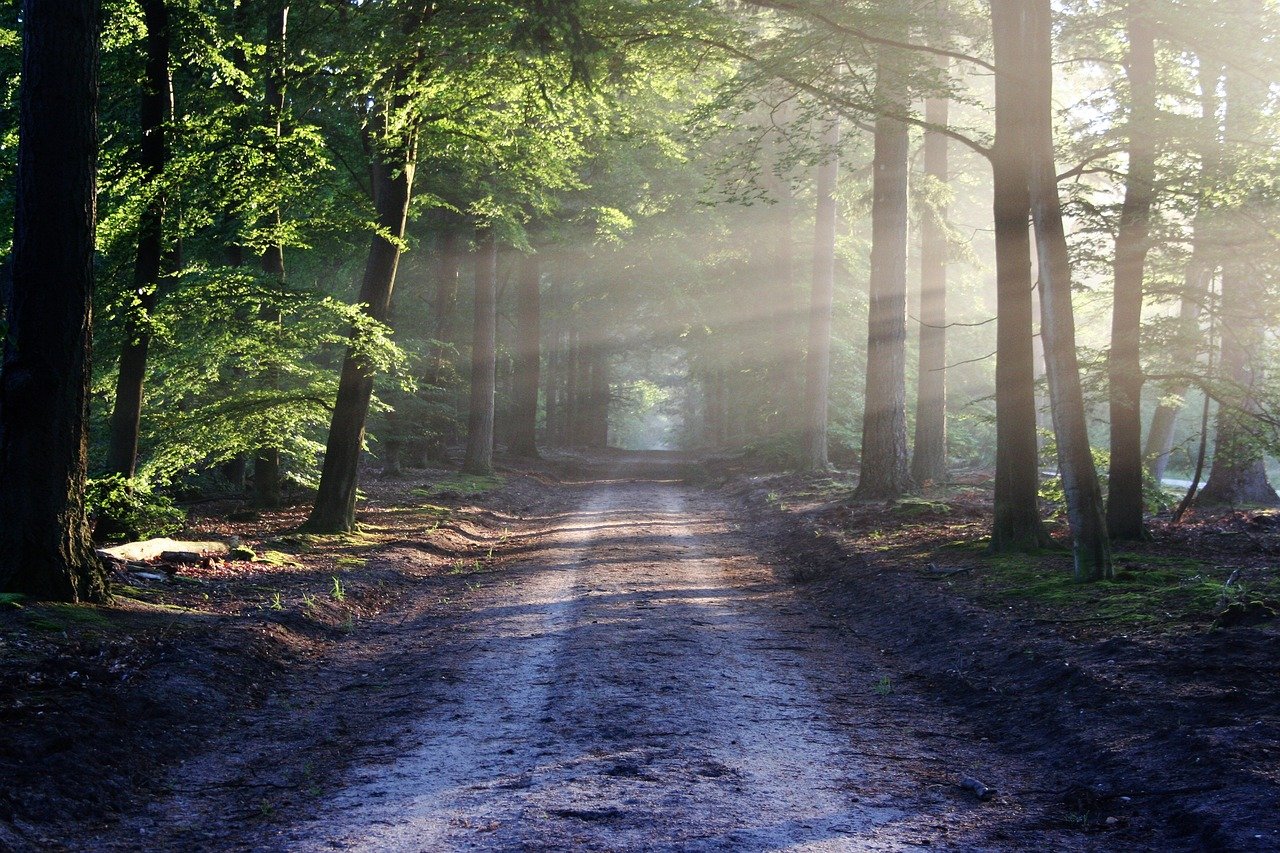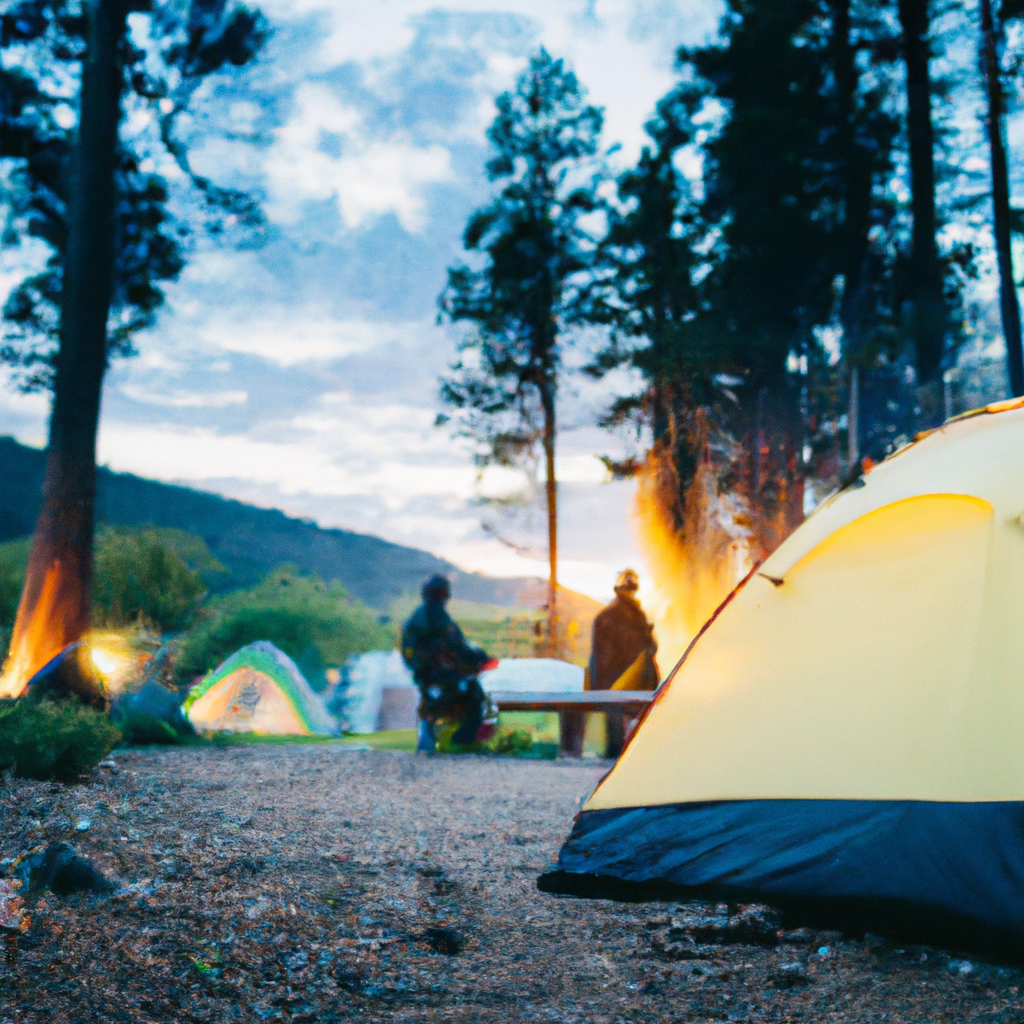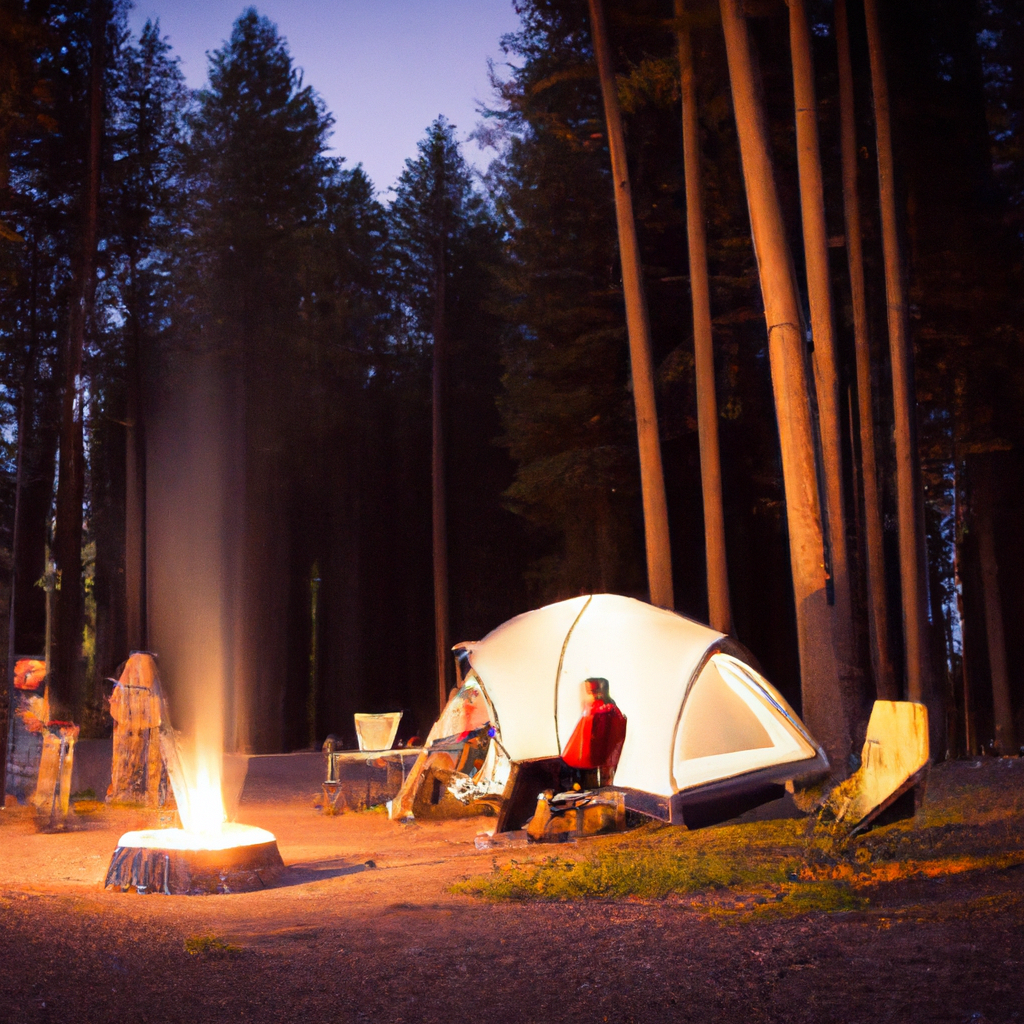Imagine waking up to the sounds of birds chirping, surrounded by stunning natural landscapes and the fresh scent of pine trees. Camping in national parks offers the perfect escape from the hustle and bustle of everyday life, allowing you to reconnect with nature and rejuvenate your spirit. Whether you’re an avid hiker, a wildlife enthusiast, or simply someone seeking solace in the great outdoors, national park camping provides an unforgettable experience that will leave you feeling refreshed and inspired. So grab your tent, pack your camping gear, and get ready to embark on a memorable adventure in the heart of some of the world’s most breathtaking landscapes. Camping in national parks is an exciting way to immerse yourself in the beauty of nature and experience the great outdoors. With so many national parks to choose from, it can be overwhelming to decide which one is right for your camping adventure. But fear not, as we have put together a comprehensive guide to help you select the perfect national park for your camping trip.
Researching the National Parks
Before you select a national park for camping, it’s important to do some research and gather information about the different parks available. Each national park offers unique landscapes, wildlife, and recreational opportunities, so it’s essential to find one that aligns with your interests and preferences. Take the time to read up on the various national parks, their activities, and attractions to help make an informed decision.
Considering the Location and Accessibility
When choosing a national park for camping, consider the location and accessibility. Think about how far you are willing to travel and whether you prefer a park that is close to home or are open to a longer journey. Additionally, think about the accessibility of the park in terms of transportation and infrastructure. Some parks may have limited road access or require off-road driving, so factor this into your decision-making process.
Checking the Camping Facilities
One of the crucial aspects of camping in a national park is the availability and quality of camping facilities. Different parks offer various camping amenities, ranging from developed campgrounds with water and electricity hookups to more primitive settings with limited facilities. Consider the level of comfort you desire during your camping trip and choose a park that caters to your needs. Some parks may also offer additional facilities such as showers, restrooms, picnic areas, and visitor centers, so keep these in mind as well.

Understanding the Permit and Reservation System
Many national parks require permits and reservations for camping, so it’s essential to understand the system in place before making any plans. Some parks may operate on a first-come, first-served basis, while others may have a reservation-only system. Research the specific park’s permit and reservation requirements, including any associated fees, and plan accordingly.
Booking a Campsite in Advance
To ensure you secure a campsite in your desired national park, it’s advisable to book in advance, especially during peak seasons. This will guarantee that you have a designated spot for your tent or RV and eliminate any potential disappointment upon arrival. Check the park’s official website or contact the park directly to make a reservation and secure your campsite.
Checking for Seasonal or Regional Restrictions
Before finalizing your camping plans, be sure to check for any seasonal or regional restrictions that may be in place. Some national parks may have specific regulations regarding camping during certain times of the year or in particular areas of the park. Understanding these restrictions beforehand will help you avoid any complications and ensure a smooth camping experience.

Deciding on a Developed Campground
When choosing a campsite within a national park, you will typically have the option of a developed campground. Developed campgrounds often provide various amenities such as picnic table, fire ring, restrooms, and potable water. These campsites are ideal for campers who prefer a more structured camping experience with easy access to facilities and a designated space for their tent or RV.
Opting for Primitive or Backcountry Camping
If you crave a more secluded and immersive camping experience, consider opting for primitive or backcountry camping. These types of camping involve pitching your tent in remote areas of the national park, away from developed campgrounds. Although this type of camping may lack amenities and facilities, it offers an unparalleled opportunity to connect with nature and enjoy the solitude of the wilderness.
Considering Amenities and Facilities
When selecting a campsite, consider the amenities and facilities available. If you plan on cooking your meals at the campsite, check if the campsite provides a grill or fire ring. Some campgrounds may have picnic tables and potable water, while others may have additional amenities like playgrounds or hiking trails nearby. Think about which amenities are essential to you and choose a campsite that meets your needs.

Tents and Sleeping Gear
When it comes to camping gear, a reliable tent and comfortable sleeping gear are essential for a good night’s sleep. Consider the size of your camping party and choose a tent that offers enough space for everyone. Look for a tent that is easy to set up and offers good ventilation to keep you cool during warmer nights. Additionally, invest in high-quality sleeping bags, sleeping pads, and pillows to ensure you rest comfortably.
Cooking and Food Supplies
Cooking and food supplies are crucial for a successful camping trip. Before setting out, plan your meals and make a checklist of the necessary cooking equipment and utensils. A portable stove or grill, pots and pans, cooking utensils, and a cooler for storing perishable items are essential. Also, pack non-perishable food items, snacks, and plenty of water to keep yourselves hydrated during your camping adventure.
Lighting and Navigation Tools
When camping in a national park, it’s essential to have proper lighting and navigation tools on hand. Pack headlamps or flashlights to provide illumination at your campsite and for any nighttime activities. Additionally, consider carrying a map, compass, or GPS device to help navigate the park’s trails and ensure you don’t get lost. Always be prepared and have backup batteries for your lighting and navigation tools.

Creating a Camping Checklist
To ensure you don’t forget any camping essentials, create a camping checklist before your trip. This checklist should include all the necessary gear, camping equipment, food supplies, and personal items you will need during your camping adventure. Tick off items on the list as you pack to ensure you have everything you need for a comfortable and enjoyable camping experience.
Planning the Duration of the Trip
Before embarking on your camping trip, plan the duration of your stay in the national park. Consider how many days you want to spend camping and explore the park’s attractions and activities. Some national parks offer multi-day hiking trails or guided tours, so factor in these opportunities when planning the duration of your trip. Make sure to allocate enough time to fully experience the beauty and wonders of the park.
Checking Weather Forecast and Safety Guidelines
To ensure a safe and enjoyable camping trip, always check the weather forecast and safety guidelines provided by the national park. Be aware of any severe weather conditions, such as storms or extreme heat, and plan accordingly. Follow any safety guidelines provided by the park, including wildlife precautions, trail regulations, and fire restrictions. Your safety and well-being should always be of utmost importance during your camping adventure.

Finding a Suitable Area
Once you arrive at the national park, take your time to find a suitable area to set up your campsite. Look for a flat and level ground that is free from any potential hazards such as dead trees or uneven terrain. Consider the proximity to amenities, water sources, and scenic views when choosing a suitable area. Take care to respect the park’s guidelines and avoid damaging the natural environment.
Pitching the Tent and Organizing Equipment
After finding a suitable area, it’s time to pitch your tent and organize your camping equipment. Follow the manufacturer’s instructions for setting up your tent and ensure it is securely anchored to withstand any potential wind or rain. Organize your camping gear in a tidy and efficient manner, keeping frequently used items easily accessible. This will help you stay organized throughout your camping trip and make things more convenient.
Setting Up Cooking and Eating Area
With your campsite established, it’s important to set up a dedicated cooking and eating area. If your campsite does not provide a fire ring or grill, set up your portable stove or grill in a safe and designated area. Clear away any flammable materials and create a safe zone to prepare your meals. Set up a picnic table or portable camping table for convenient dining and ensure proper sanitation practices when handling food.
Understanding Campfire Regulations
Campfire regulations can vary from park to park, so it’s essential to understand and follow the regulations in place. Some national parks may prohibit campfires altogether due to fire risk or environmental concerns. If campfires are allowed, ensure you use designated fire rings or pits and never leave a fire unattended. Familiarize yourself with the specific regulations regarding firewood collection, fire size, and extinguishing procedures.
Building and Maintaining a Safe Campfire
If you are permitted to have a campfire, it’s important to build and maintain it safely. Start by preparing a fire pit with at least a three-foot radius cleared of any flammable materials. Use small, dry branches or firewood to build your fire slowly, ensuring it is well-contained within the fire pit. Never use accelerants such as gasoline to start or revive a campfire. Always keep a bucket of water or sand nearby for emergencies and adhere to the park’s regulations for fire size and safety.
Extinguishing the Campfire Properly
When it’s time to extinguish your campfire, it’s crucial to do so properly to prevent any potential fire hazards. Allow the firewood to burn completely, leaving only ashes and charred remnants. Pour water over the fire, ensuring all embers are thoroughly soaked. Stir the ashes with a shovel or stick to ensure complete extinguishment, and repeat the soaking and stirring process until the fire is cold to the touch. Never leave a campfire unattended or smoldering.
Hiking and Walking Trails
Exploring the hiking and walking trails within the national park is an excellent way to immerse yourself in the natural beauty and discover hidden gems. Research the various trails available, ranging from easy nature walks to challenging hikes, and choose ones that suit your fitness level and interests. Always stay on designated trails, follow any signage or guidelines, and be respectful of the park’s flora and fauna.
Wildlife Observation
National parks are home to a diverse range of wildlife, and observing these creatures in their natural habitat can be a rewarding experience. Whether it’s birdwatching, spotting deer, or catching a glimpse of elusive predators, always maintain a safe distance and never approach or feed wild animals. Use binoculars or a camera with a telephoto lens to observe wildlife from a suitable, respectful distance.
Participating in Ranger Programs
Many national parks offer ranger-led programs and activities that provide valuable insights into the park’s natural and cultural history. These programs may include guided hikes, wildlife talks, campfire storytelling, or stargazing events. Take advantage of these educational opportunities to learn more about the park’s ecosystems, geology, and history. Joining these programs can enhance your camping experience and deepen your appreciation for the national park.
Fishing and Boating
If you enjoy angling or boating, national parks often offer opportunities for fishing in designated water bodies or enjoying leisurely boat rides. Check the park’s regulations and obtain any necessary permits before engaging in any fishing or boating activities. Follow catch and release practices to protect the park’s aquatic ecosystems and respect any specific guidelines or restrictions related to fishing and boating within the park.
Biking and Cycling Routes
Exploring national parks on two wheels can be an exhilarating way to experience the park’s beauty and cover more ground. Many parks have biking and cycling routes that cater to different skill levels, from leisurely family rides to challenging mountain biking trails. Bring your own bikes or rent them from nearby facilities, and adhere to any specific rules or regulations regarding biking within the park.
Nature Photography and Birdwatching
National parks offer ample opportunities for nature photography and birdwatching, making it a great hobby to indulge in during your camping trip. Capture stunning landscapes, unique wildlife, and vibrant flora in all their natural glory. Bring a good-quality camera or mobile device with a decent zoom lens to capture close-ups of birds and other wildlife. Always be respectful of nature and avoid disturbing wildlife or damaging fragile ecosystems in pursuit of the perfect shot.
Being Aware of Potential Hazards
While camping in national parks can be an incredible experience, it’s important to be aware of potential hazards. These may include wildlife encounters, extreme weather conditions, uneven terrain, or hazardous plants. Stay informed about the potential risks in the park you choose and prepare accordingly. Educate yourself on wildlife safety and always store food securely to avoid attracting animals to your campsite.
Preparing for Emergencies
When camping in any wilderness setting, it’s crucial to be prepared for emergencies. Pack a well-stocked first aid kit, including essential supplies such as bandages, antiseptic ointment, and pain relievers. Familiarize yourself with the park’s emergency procedures and be aware of the nearest medical facilities. Additionally, have a communication plan in place in case of emergencies, ensure your mobile devices are fully charged, and carry extra batteries or portable chargers.
Familiarizing with Park Rules and Regulations
To have a safe and enjoyable camping experience, it’s important to familiarize yourself with the park’s rules and regulations. Observe any posted signage, follow trail etiquette, and respect any specific rules regarding camping, campfires, or wildlife encounters. By adhering to park rules, you not only ensure your own safety but also help preserve the natural environment and protect the park for future generations.
In conclusion, selecting a national park for camping involves careful research, consideration of location and accessibility, and checking the camping facilities available. Booking campsites in advance, choosing the right campsite, and preparing essential camping gear are vital steps for a successful camping trip. Proper planning, setting up camp safely, abiding by campfire regulations, and exploring the national park responsibly are crucial for a memorable camping experience. Finally, familiarizing yourself with safety tips, enjoying outdoor activities and recreation, and respecting park rules and regulations will help contribute to a safe and enjoyable camping adventure in a national park. So, pack your gear, choose a national park that speaks to you, and get ready for an unforgettable camping experience amidst the natural wonders of the great outdoors!

